Want to know more about the scientists behind each Data Nugget? Click on their name for a link to their professional websites, or on their Data Nugget to learn more about their research!
| Name | Institution | About Me | Data Nuggets | |
|---|---|---|---|---|
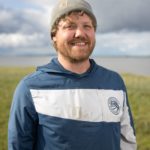 | Jaron Adkins | Utah State University | Jaron is an ecosystem ecologist focused on the links between soil microbial communities and ecosystem functions. Jaron received his B.S. from Boise State University, where he researched how plant-soil interactions influence carbon sequestration under biofuel crops. Jaron completed his Ph.D. at Michigan State University, where he studied the effects of wildfire on soil carbon cycling and microbial community structure in California mixed-conifer forest. | Sink or source? How grazing geese impact the carbon cycle |
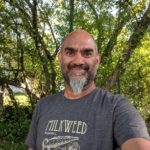 | Anurag Agrawal | Cornell University | I teach classes in ecology and field biology, and enjoy natural history, identifying plants, figuring out what makes some organisms toxic, and interacting with students. Most of my research is on the interactions on insects and plants in the local landscape – seeking to understand their ecology and evolution. Monarchs and milkweeds figure in prominently, but not exclusively. I also work with plant breeders to work on ways to improve pest management in crops with reduced pesticides. The ability to pursue a life in science is a gift from our society for which I will be eternally grateful. Find out more about me by visiting my scientist profile! | How milkweed plants defend against monarch butterflies |
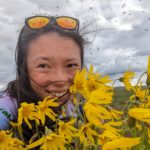 | Ruby An | Princeton University | I am a plant community ecologist fascinated by the Arctic and passionate about understanding the resilience of ecosystems to global climate change. In my PhD at Princeton University, I study the expansion of tundra shrubs or “shrubification” of the Arctic. I spend the summer at Toolik Field Station on the North Slope of Alaska, where I run field experiments to simulate “future worlds” for tundra plants. In the winter, I am in New Jersey analyzing data and building mathematical models. Year-round, some of my main joys are eating pastries, growing basil from grocery-store stems, and playing dungeons & dragons on zoom with my sisters. | Which tundra plants will win the climate change race? |
 | Holly E. Anderson | University of Warsaw, Poland | Holly is a palaeontologist at the University of Warsaw. Holly’s multidisciplinary studies include reconstructions of function and behaviour in prehistoric organisms and the processes of decay and burial that lead to fossilisation. Find out more about me by visiting my scientist profile! | Reconstructing the behaviour of ancient animals |
 | Kristina J. Anderson-Teixeira | Smithsonian Conservation Biology Institute | I am a forest ecologist at the Smithsonian, where I lead the Ecosystems and Climate Program for the Forest Global Earth Observatory (ForestGEO). I am interested in how forests around the world interact with our changing climate - both how they respond and how they can help to slow the pace of climate change. For example, I am interested in how climate change is affecting tree growth and mortality, what makes trees resistant or vulnerable to drought, how climate affects forest recovery after big disturbances, and how the amount of carbon stored in forests varies around the world. | Breathing in, Part 1 & Breathing in, Part 2 |
 | Irvin Arce | Miami Senior High School & Florida International University | I am an Environmental Science teacher at Miami Senior High. My students would say I love hands-on activities and field work. I like to make connections between the theory and the real world in my labs. In 2023 I joined a Research Experience for Teachers where I worked on a social research project that focuses on measuring the real temperature across Miami. Among many things new that I learned, I saw that everyone can contribute meaningfully to science and help their community by doing so. The field work in my RET project was done by concerned citizens with various scientific backgrounds. | Do you feel the urban heat? |
 | Ivan Arismendi | Oregon State University | I am from the southern cone of South America where empanadas, lamb, and temperate rainforests formed my early years. I am a quantitative aquatic ecologist interested in the links among water, land, and people. I focus on freshwater-terrestrial links, freshwater-marine links, invasive species impacts on aquatic and riparian ecosystems, and the consequences of climate change on freshwater food webs and ecosystems. I am also interested in issues related to diversity and inclusion in science. | All washed up? The effect of floods on cutthroat trout |
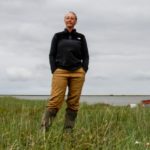 | Trisha Atwood | Utah State University | Trisha is an assistant professor in the Watershed Sciences Department and the Ecology Center, where she runs the Aquatic Ecology and Global Change Lab at USU. Undergraduate students, graduate students, and staff in the lab conduct research on a broad array of questions relating to the health, conservation and dynamics of freshwater and marine ecosystems across the globe. | Sink or source? How grazing geese impact the carbon cycle & Poop, poop, goose! |
 | Christie Bahlai | Kent State University, Michigan State University | I am an applied quantitative ecologist and population ecologist who uses approaches from data science to help solve problems in conservation, sustainability, and ecosystem management. I combine a background in physics and organismal ecology with influences from the tech sector and conservation NGOs to ask questions and build tools addressing problems in population ecology. | Blinking out? |
 | Megan Ballard | University of Texas - Austin | I am interested in using measurements of sound waves to learn more about underwater environments. By studying the propagation of sound waves through the ocean, we can characterize the water masses of the ocean’s interior, the sediments that make up the seafloor, and the waves or ice cover on the ocean’s surface. By listening to naturally occurring sounds, we can determine wind speed and rainfall, identify species of vocalizing fish and marine mammals, and estimate photosynthetic bubble production from submerged aquatic vegetation. | The sound of seagrass |
 | Mélanie Banville | Arizona State University | Ever since I was young I had a keen interest for wildlife. This led me to pursue a B.S. in Zoology at McGill University, Montreal, Canada. Shortly after I graduated I left Canada to travel and work in the United States. I have been working as a professional wildlife biologist on a wide variety of wildlife-related projects for over a decade, eight of which were in the desert southwest. I truly believe that a better understanding of urban ecology is of fundamental importance for the future of all living organisms as our urban boundaries expand and put more pressure on our ecological resources. | Lizards, iguanas, and snakes! Oh my! |
 | Tina Barbasch | Boston University | I first became interested in science catching frogs and snakes in my backyard in Ithaca, NY. This inspired me to major in biology at Cornell University, located in my hometown. As an undergraduate, I studied male competition and sperm allocation in the local spotted salamander. After graduating, I joined the Peace Corps and spent 2 years in Morocco teaching environmental education and 6 months in Liberia teaching high school chemistry. As a PhD student, I study how parents negotiate over parental care in my study system, the clownfish. Find out more about me by visiting my scientist profile! | Raising Nemo: Parental care in the clown anemonefish |
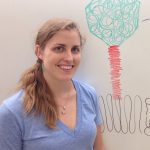 | Carina Baskett | Michigan State University | I became interested in biology when I was in high school, so I joined Science Olympiad. I went to college at Rice University in Houston, Texas, my hometown. I did some research on pollination in college, and decided that I really enjoyed learning about the relationships between plants and insects. Before starting my PhD, I did a year-long Watson Fellowship, an independent study abroad. I traveled to different ecosystems in Ecuador, Chile, Panama, and Spain, and made a podcast about relationships between people and nature. For my PhD, I studied pollination and herbivory and how they change with latitude—lots of travel again! | Where to find the hungry, hungry herbivores & Are plants more toxic in the tropics? |
 | Heather Bateman | Arizona State University | I am a field ecologist and conservation biologist interested in how human land-use affects vertebrate populations and habitats. As Earth’s ecosystems move into a future of growing human influence, restoring the integrity of these ecosystems will become central to the conservation of biodiversity. Human activities tend to perturb ecosystems by suppressing natural disturbances such as flooding or fire. This can lead to a decline in native species and proliferation of non-native species. My research interests lie in exploring population responses to habitat alteration, with a particular interest in amphibians, reptiles, and birds. | Lizards, iguanas, and snakes! Oh my! |
 | Karen Beard | Utah State University | My research focuses on how changing landscapes influence species interactions and ecosystem functioning. My research is often done in the context of non-native species and/or climate change. I am researching how non-native frogs influence the communities and ecosystems where they invade on the Hawaiian islands. I have also conducted research in the Yukon-Kuskokwim Delta in western Alaska on how the timing of seasonal events, including bird migration, influences species interactions and ecosystem processes. | Sink or source? How grazing geese impact the carbon cycle |
 | Matthew G. Betts | Oregon State University | I study the ways that landscape composition and pattern influence animal behavior, species distributions and ecosystem function. As humans are one of the primary drivers of landscape characteristics globally, much of my work is applied and focused on management and conservation. However, understanding mechanisms is key to generalization, so a central part of my research program is basic in nature and links landscape ecology to behavioral ecology, physiology, and molecular ecology. | Trees and bushes, home sweet home for warblers |
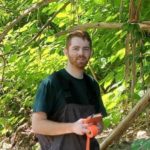 | Andrew Blinn | Idaho State University | Andrew is currently working on a research project studying carbon dynamics and ecosystem function in urban streams. Stream ecology played a large role in developing his passion for ecological sciences and he hopes to foster the passion of future scientists through education. He has also spent two years as an interpretive park ranger and naturalist for Maryland and Delaware State Parks where he developed stream monitoring programs in parks that help inform natural resource managers and introduce the public to exciting research methods in ecology. | Surviving the flood |
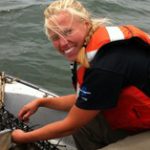 | Harriet Booth | Northeastern University | I am interested in how species interactions drive community structure and dynamics in coastal ecosystems as well as how these interactions are altered by human influence. My graduate research will focus on predator-prey dynamics in a subtidal oyster reef system in Apalachicola Bay, Florida. I am examining the combined effects of intraspecific trait diversity and density of stone crabs on oyster survival and growth over time. | The mystery of Plum Island Marsh |
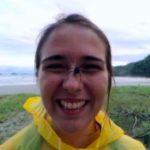 | Isabela Borges | Kellogg Biological Station,Michigan State University | I'm a Brazilian evolutionary ecologist, currently working as a conservation scientist at the Santa Barbara Botanic Garden in Santa Barbara, California. I received my my Ph.D. from Michigan State University, having worked in the Fitzpatrick lab at the W. K. Kellogg Biological Station. I grew up in Rio de Janeiro, Brazil, and started my undergraduate degree in biology at the Federal University of Rio de Janeiro. I then transferred to the University of Toronto, in Canada, where I completed a B.Sc. in Ecology and Evolutionary Biology. | Guppies on the move |
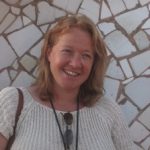 | Jennifer Bowen | Marine Science Center, Northeastern University | My work runs the gamut from modeling how changing land use on watersheds alters the geochemistry of receiving waters to understanding how climate change and nutrient enrichment alters the structure and function of microbial communities. In particular I have been focusing on both how human activities are altering the structure and function of microbial communities and in turn how microbial communities can help ameliorate pollution from human sources. | Marsh makeover |
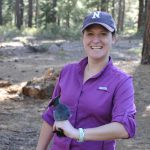 | Carrie Branch | University of Nevada Reno | I have been interested in animal behavior and behavioral ecology since my second year in college at the University of Tennessee. I research how variation in ecology and environment affect communication and signaling in birds. I have also studied various types of memory and am interested in how animals learn and use information depending on how their environment varies over space and time. Once I finish my PhD I hope to become a professor at a university so that I can continue to conduct research and teach students about animal behavior. In my spare time I love hiking with my friends and dogs, and watching comedies! | Finding Mr. Right |
 | Adriana Briscoe | University of California, Irvine | Like many scientists, I believe that communicating science to the public is becoming increasingly urgent. As a consequence, I have become very interested in how science communicated in K-12 lessons, short dispatches, blogs, podcasts and videos can be used as a tool for inviting the public to participate in science as students, citizen scientists or as consumers of scientific knowledge. My research is focused on understanding what happens to gene products underlying physiological and behavioral traits following gene duplication and functional diversification. Find out more about me by visiting my scientist profile! | Why are butterfly wings colorful? |
 | Robert Buchsbaum | Mass Audubon | I enjoy sharing my knowledge and passion for the natural world as a trip leader and lecturer for Mass Audubon and other environmental groups. My particular interests include marine and coastal habitats, wildflowers, birds, climate change, and alpine ecology. I am a Mass Audubon’s Regional Scientist in the Southeast, Cape, and Islands Region and have been a staff scientist here since 1987. | Make way for mummichogs & Does sea level rise harm saltmarsh sparrows? |
 | Kristi Bugajski | Valparaiso University | I specialize in the area of forensic entomology. Forensic entomology looks at how insects are used in a court of law. My specialty is medico-legal forensic entomology, or how maggots can be used to estimate the amount of time that has passed since death. I am interested in oviposition timing and factors that influence oviposition. | CSI: Crime Solving Insects |
 | Ashley Carroll | Gull Lake Middle School | I teach 7th-grade science at Gull Lake Middle School in Richland, MI. In the summer of 2018 I worked in Jeff Conner’s lab and participated in a Research Experience for Teachers (RET). My research experience took place at one of Michigan State University's off-campus sites, Kellogg Biological Station (KBS). During my time at KBS I collaborated with scientists and college students to study a variety of radish plant adaptations. | Fast weeds in farmer’s fields |
 | Jeff Conner | Michigan State University | I study the mechanisms by which natural selection on plants produces (sometimes very rapid) adaptation to a variable environment, as well as possible constraints on this adaptation. Members of my lab measure the strength of selection acting in present-day populations and combine this with quantitative and molecular genetic and genomic analyses to predict short-term evolutionary change and identify the genetic mechanisms underlying adaptation and constraint. Major projects focus on floral evolution and weed adaptations to agricultural habitats. | Fast weeds in farmer’s fields |
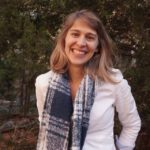 | Susan Cook-Patton | The Nature Conservancy | I am a Senior Forest Restoration Scientist at The Nature Conservancy. I work to quantify the climate mitigation potential of reforestation and other natural climate solutions and infuse the best-available science into land management decisions. | Breathing in, Part 1 & Breathing in, Part 2 |
 | Dave Costello | Kent State University | I am an ecosystem ecologist and I spend most of my time studying how human actions impact rivers and streams. Recently, my work has focused on excess nutrients, metal pollution, and the combination of those two “stressors”. I use experiments in the field and lab to discover how human stressors change the abundance, composition, and function of organisms living in streams. I am fascinated by the resilience of stream organisms to the stresses of human disturbance. | Surviving the flood |
 | Aaron Curry | Baltimore Ecosystem Study LTER site & Wise High School | I am an Environmental Science Teacher at Wise High School in Maryland. As a Research Experience for Teachers (RET) Fellow with the Baltimore Ecosystem Study, I studied the effects of pharmaceuticals and personal care products on riparian spider food webs. To do this research, I worked with a team of undergraduate students from UMBC to sample spiders and we also analyzed pictures of spider webs to determine the irregularity of the web shapes. I am a huge science nerd and I really enjoy being outdoors studying science. Find out more about me by visiting my scientist profile! | Spiders under the influence |
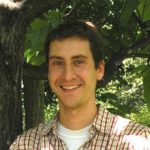 | Robert Cox | University of Virginia | I am an evolutionary ecologist and my interests span from comparative endocrinology and physiology to behavioral ecology and evolutionary genetics. My current projects focus on integrating quantitative genetics, endocrinology, and genomics to study intralocus sexual conflict and life-history tradeoffs. | Is it better to be bigger? & Is it dangerous to be a showoff? |
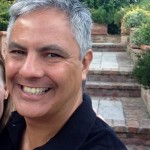 | Hans Dam | University of Connecticut-Avery Point | I am a biological oceanographer. My research interests are in the biology, ecology and evolution of planktonic organisms, particularly pelagic copepods. Earlier in my career I investigated questions dealing with the role of planktonic organisms in biogeochemical cycles in the ocean, and the formation and fate of marine aggregates. Recently, my interests have broadened to deal with questions of the evolutionary ecology of plankton. | Dangerous aquatic prey: can predators adapt to toxic algae? |
 | Ellen Damschen | University of Wisconsin-Madison | As an ecologist and conservation biologist, I am interested in how local and regional ecological processes affect species diversity with a particular emphasis on how human-induced global changes affect their relative importance. My approach lies at the intersection of basic and applied ecology, using long-term datasets and large-scale experiments from terrestrial plant communities to test basic theory with relevance to applied conservation management. | A burning question |
 | Emily Dangremond | Roosevelt University | I am an ecologist with interests in conservation, climate change, and patterns of abundance. My research has been on rare plants in California, Panama and Illinois and on the geographic range expansion of mangroves in Florida. I teach courses in ecology, introductory biology, botany and global change biology. One of my main goals is to spend time outside, and studying the natural world lets me do that. | Mangroves on the move |
 | Sarah Davies | University of Texas at Austin & Boston University | Changing climates and ongoing anthropogenic habitat modifications threaten natural ecosystems worldwide. Research in my lab studies the potential roles of acclimation, adaptation, and dispersal in an organism’s response to rapid climate change. Understanding how symbioses are maintained is fundamental as climate change disrupts symbiotic relationships worldwide. The coral–Symbiodinium symbiosis is essential and serves as the cornerstone for the entire reef ecosystem. | Won’t you be my urchin? |
 | Erin de Leon Sanchez | University of California - Santa Barbara | I am a Ph.D. student in Ecology, Evolution, and Marine Biology at the University of California, Santa Barbara studying the effects of marine heatwaves on the ecologically and commercially important red sea urchin, Mesocentrotus franciscanus. Prior to graduate school, I earned my B.S. in Biology at the University of California, Davis and researched how warming and hypoxia affect Chinook salmon. Overall, I am interested in how commercially important aquatic species may adapt to climate change and its associated stressors. Find out more about me by visiting my scientist profile! | Do urchins flip out in hot water? |
 | Clara Deser | National Center for Atmospheric Research | I study global climate variability and climate change using observations and models, with an emphasis on interactions among the atmosphere, ocean, and sea ice. My recent projects include the role of internal variability in regional climate change, the effects of projected Arctic sea ice loss on global climate, asymmetries between El Nino and La Nina, and Pacific decadal variability. | The Arctic is Melting – So What? |
 | Leila Desotelle | Michigan State University | My research explores how food web subsidies can influence communities. I study the Kalamazoo River, which has several dams. Dams change the flow of the water and can increase the production of phytoplankton. The phytoplankton can act as a subsidy both temporally and spatially. Stream insect communities change along the river, and some of this response is to the subsidy from dams. Rivers frequently have multiple dams though many are aging and will be removed in the coming decades. Therefore, understanding how dams change food sources is important for the management of rivers. | Float down the Kalamazoo River |
 | Colin Donihue | Harvard University & Washington University | I am an evolutionary ecologist studying the drivers and consequences in intra-specific variation in animal functional traits. In particular, my research focuses on predicting changes in behavioral, morphological, and performance traits as a result of changes in ecological context. My field research in Southern Europe, the West Indies, East Africa, and North America makes use of direct manipulative studies and landscape-scale natural experiments. My work generates fundamental insights into eco-evolutionary dynamics and critical applied lessons for conservation in human-dominated landscapes. | Hold on for your life! Part 1 & Part 2 |
 | Emma Droste | North Carolina State University | I am a PhD student in Genetics and Genomics at NC State. I received my bachelors in Genetics and master's in STEM Education also from NC State (AKA Go Pack!). I am fascinated by how genes shape the nervous system, and am studying the fly auditory system for my dissertation. When I'm not doing science, I am crafting in my sewing room, acting on the stage, or hammocking with a book. | Did you hear that? Inside the world of fruit fly mating songs |
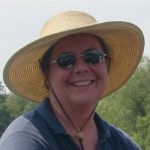 | Liz Duff | Mass Audubon, Salt Marsh Science Project | I coordinate environmental education in the Great Marsh Region and beyond, primarily in salt marshes and other coastal ecosystems. I provide professional development workshops and courses for teachers. Currently, I am conducting long term ecological research with middle and high school students, investigating invasive Phragmites. I engage students in stewardship projects, and am passionate about my work teaching about climate change, working to raise awareness about rising sea levels, and to inspire actions and plan for the future. | Make way for mummichogs & Invasive reeds in the salt marsh & Can a salt marsh recover after restoration? |
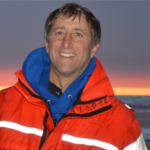 | Ken Dunton | University of Texas Marine Science Institute & Beaufort Lagoon Ecosystems LTER | I am a biological oceanographer whose research is focused on estuarine, coastal, and shelf processes. Although my work spans from the Arctic to the Antarctic, my continuous studies of the arctic coastal ecosystem have spanned three decades. My research also includes measurements that can help identify processes that are sentinel indicators of global change. | Benthic buddies & Seagrass survival in a super salty lagoon |
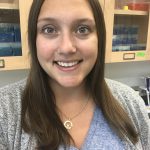 | Carleigh Engstrom | Biotechnology High School & Monmouth University | I teach Molecular and Agricultural Biotechnology to tenth graders in New Jersey. I hope to instill my love for biology with all of my students, and one way I do that is by staying current. During the summer of 2018, I participated in a Research Experience for Teachers (RET) program at Monmouth University's Phifer-Rixey lab. This research experience allowed me to get involved with a striped bass project, where we determined the stock populations for striped bass that were sampled off the NJ coast. I truly enjoy sharing this experience with my students, as a way to show them all that science has to offer. | Fishy origins |
 | Meredith Everett | University of Washington & NOAA | My research explores how organisms interact with and adapt to their environments on a genomic scale, and how knowledge of these interactions can be applied to conservation and management solutions. During my time in the Seeb Lab I worked on SNP discovery, developing novel genomic maps for Pacific salmonids, and using these maps to discover the genomic regions associated with ecological traits through QTL and association mapping. I was also involved in a project using SNPs to track sockeye salmon in Bristol Bay, Alaska. I currently work at NOAA on the phylogenetics of deep-water corals. | Salmon in hot water |
 | Ilka (Candy) Feller | Smithsonian Environmental Research Center | I am a mangrove ecologist. I was the Principal Investigator in the Animal-Plant Interaction Laboratory at the Smithsonian Environment Research Center from 1999 until 2018, when I retired and transitioned to an emeritus appointment at the Smithsonian Institution. My research is focused on the biology of animal-plant interactions in mangrove ecosystems. I maintain a lab at SERC and plan to continue to work on mangroves for the foreseeable future. | Mangroves on the move |
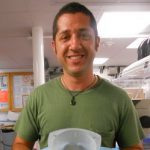 | Michael Finiguerra | University of Connecticut-Avery Point | My PhD dissertation investigated the evolution of tolerance to toxins. Today I am a professor at the University of Connecticut, Teaching is my passion. I love interacting with students and coaching them through complex problems. To me, science is more than intellectual content. It is a lens through which to teach critical thinking. Helping my students become independent critical thinkers is my goal. I use my research as a tool for teaching; it connects the real-world to classroom lectures and gives student much needed hands-on experience, in both laboratory and field-settings. | Dangerous aquatic prey: can predators adapt to toxic algae? |
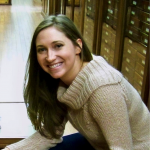 | Susan Finkbeiner | University of California, Irvine & Boston University | I spent my childhood chasing butterflies and collecting insects in Illinois, with the dream of studying butterflies in the tropical rainforest. As an undergrad at Cornell I did a semester abroad in Costa Rica where I was introduced to Heliconius butterflies. For my PhD I worked with these butterflies to examine how natural and sexual selection drive the evolution of butterfly wing patterns. I am currently a postdoctoral researcher at Boston University (Mullen Lab) working with Adelpha butterflies to understand the ecological and evolutionary processes that shape patterns of biodiversity. | Why are butterfly wings colorful? |
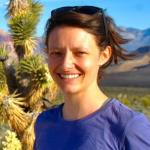 | Erika Foster | Colorado State University | I strive to answer complex questions about soil productivity and to inspire the next generation of soil ecologists. I aim to work with diverse communities from farmers to students, to discover best land management practices, and to ignite curiosity and passion for science. Broadly, I hope to continue serving as an interpreter in my field of soil ecology, delving into the mechanisms that build healthy soils. I want to dig deep into the science, and connect my work to management practices for climate-smart agriculture. | Can biochar improve crop yields? |
 | Daniel Fraser | University of Texas Marine Science Institute & Beaufort Lagoon Ecosystems LTER | As a member of the Beaufort Lagoon Ecosystem - Long Term Ecological Research (BLE - LTER) program, I am studying the spatial and temporal variation in community composition and structure of benthic macrofaunal communities of Alaskan Arctic Lagoons. | Benthic buddies |
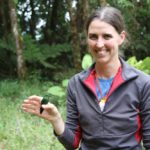 | Sarah Frey | Oregon State University | My research is in quantitative population ecology, with a focus on understanding how environmental patterns at different scales affect biodiversity in both temperate and tropical forest systems. Specifically, I study how land-use and climate changes in montane forest landscapes influence species distributions, abundance trends, and community composition. I apply novel analytical tools to address my research questions. | Trees and bushes, home sweet home for warblers |
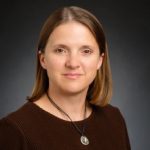 | Becky Fuller | University of Illinois | I grew up in a small town riding horses in 4-H and working in a veterinary clinic. I’ve always been interested in biology, but two key experiences lead me to my career. I took courses at Cedar Point Biological Field Station. There I met Dr. Tony Joern who hired me onto his field crew to study grasshopper community ecology. I caught the “science bug” and never looked back. After undergrad I worked with Dr. Anders Berglund on pipefish on the west coast of Sweden. There I developed my love for fish and aquatics. I feel very fortunate to have a job where I can do science and teach young, enthusiastic students. | Why so blue? The determinants of color pattern in killifish Part 1 & Part 2 |
 | Iniyan Ganesan | Michigan State University | I am interested in the pore size of the chloroplast TOC and TIC protein translocons as well as the degree of folding present in proteins as they pass through chloroplast outer and inner membranes. My area of specialization is Molecular Biology, Biochemistry, and Genomics. | Cheaters in nature – when is a mutualism not a mutualism? |
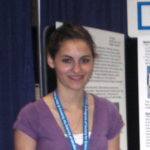 | Ali Gephart | Bayfield High School | I graduated from Bayfield High School in 2012. After graduation, I attended UW-La Crosse for 2 years and then transferred to UW Madison where I graduated in 2016 with a degree in Communication Arts - Film/Radio/TV. I spent 5 years in Los Angeles trying my best to avoid the sun before moving back to the Midwest. I now live in Chicago and work as a Studio Mechanic (Local 476) on TV shows such as Chicago Med, The Chi and Force. I much prefer the climate here in Chicago, Southern California is simply too hot. Not to mention I couldn’t stand living so far away from one of the Great Lakes. | Lake Superior rhythms |
 | Gena Gephart | Bayfield High School | After graduating from Bayfield High School, Gena attended UW-Madison where she got her degree in Communication Arts and Gender & Women’s Studies. After college Gena moved to Chicago to pursue standup comedy which people think is an art but is actually a science. | Lake Superior rhythms |
 | Eben Gering | Michigan State University | One of the most exciting things I learned as a college student was that natural populations sometimes evolve very quickly. Biologists used to think evolution was too slow to be studied “in action”, so their research focused on evolutionary changes that occurred over thousands (or even millions) of years. I study feral animal populations to learn how rapid evolutionary changes help them survive and reproduce, without direct help from us. | Feral chickens fly the coop |
 | Anne Giblin | Marine Biological Laboratory & Plum Island Ecosystems LTER | My major research interest has been on the cycling of elements in the environment, especially the biogeochemistry of nitrogen, sulfur, iron, and phosphorus. Much of my work has been focused in soils and sediments where element cycling takes place under different conditions of oxidation and reduction. Much of my current research focuses on the nitrogen cycle and has been centered on understanding how ecosystems respond to high nutrient inputs from wastewater and fertilizer. | Keeping up with the sea level |
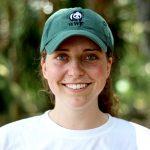 | Cara Giordano | University of Virginia | My research in sexual selection focuses on the dewlap, a secondary sexual trait in the brown anole lizard. I investigate if variation in the characteristics of this ornament relates to the fitness of the individual expressing it. I am interested in how ecological relationships change over time, particularly under pressures of environmental transition, as well as the physiological mechanisms that underlie conservation concerns. | Is it dangerous to be a showoff? |
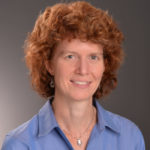 | Laura Gough | Towson University | When I was young, I was always happiest when I was outside. I loved to walk in the woods and observe insects, birds, and mammals and think about how they could live with the plants I encountered there. I trained to be a plant ecologist and am still interested in how plants interact with other organisms in the same habitat. I have been studying the arctic tundra for many years and love thinking about how arctic organisms survive and thrive and how they are responding as climate change progresses and the Arctic warms. | Which tundra plants will win the climate change race? |
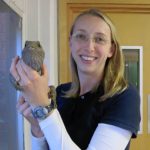 | Kristine Grayson | University of Richmond, Victoria University of Wellington | I am an Associate Professor in the Biology Department and an HHMI BioInteractive Ambassador and facilitator with the Quantitative Undergraduate Biology Education and Synthesis (QUBES) project. My work on tuatara was conducted during a postdoc at Victoria University of Wellington funded by an NSF International Research Fellowship. One of my claims to fame is capturing the state record holding snapping turtle for North Carolina – 52 pounds! To read more about my interest in science from a young age, check out this article. | When a species can’t stand the heat |
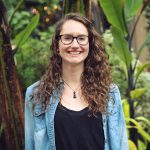 | Skye Greenler | Colorado College & Purdue University | As a child I was always asking why; questioning the behavior, characteristics, and interactions of plants and animals around me. This love of discovery, observation, questioning, and experimentation led me to pursue a career in science. As a graduate student at Purdue I study the factors influencing oak regeneration after ecologically based timber harvest and prescribed fire. While my primary focus is ecological research, I love getting to leave the lab and bring science into classrooms to inspire the next generation of young scientists and encourage all students to be always asking why! | Is chocolate for the birds? |
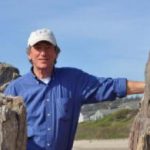 | Stanley Gregory | Oregon State University | I am a professor emeritus. My research focuses on the analysis of processes and patterns that shape aquatic and terrestrial ecosystems at landscape scales. I am particularly interested in the influence of human activities on ecosystem structure and function. My work evaluates patterns of historical change as a basis for developing restoration strategies and design future human development. | All washed up? The effect of floods on cutthroat trout |
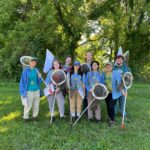 | The Haddad Lab | Kellogg Biological Station, Michigan State University | We study the application of ecological principles to the conservation of biodiversity - from individual rare animals, to all species living within a community, to species effects on ecosystems and people. We focus on strategies like habitat corridors that are intended to overcome the negative effects of habitat loss and fragmentation, and the effects of land use intensity in diversified agricultural landscapes that increase ecosystem services such as pollination. | Little butterflies on the prairie |
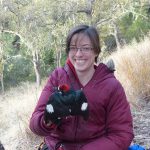 | Natasha Hagemeyer | Old Dominion University | I got an early start with bird research, and banded my first bird at 12 years old. Since then, I've worked with a variety of species and questions, looking at song sharing in orchard orioles, foraging behavior in black-backed woodpeckers, window strikes in migratory passerines, and social behavior in acorn woodpeckers. My true love, however, is movement ecology, and my PhD research focuses on the pre-dispersal movement patterns of the cooperatively breeding acorn woodpeckers, using a novel automated telemetry system with solar-powered radio tags. | Deadly windows |
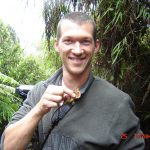 | Travis Hagey | Michigan State University, BEACON | Ever since I was a kid, I've been interested in animals and wanted to be a paleontologist. I even had a bunch of dinosaur names memorized to back it up! In college I discovered evolutionary biology, which drove me to apply for graduate school and become a scientist. There, I fell in love with comparative biomechanics, which combines evolutionary biology and mechanical engineering. Today I study geckos and their sticky toes, which allow them to scale surfaces like glass windows and tree branches. | Sticky situations: big and small animals with sticky feet |
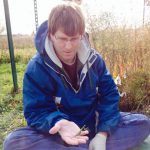 | Mark Hammond | Michigan State University | I am the research technician for the Lau lab and the resident natural history, lab, and greenhouse guru! I manage all projects in the lab, and am a resource for grad students and mentor for summer researchers. Research in the lab focuses on community ecology and evolutionary ecology. We study how plant populations respond to human-cased environmental change, the ecology and evolution of species interactions, and natural selection in the wild. | Invasion meltdown & Springing forward |
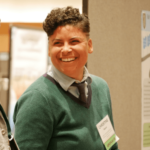 | Chris Hawn | University of Maryland, Baltimore County | The most vulnerable populations in society overlap with critical concerns in human-modified systems. I explore the relationships between human activity and ecological systems through conservation ecology, citizen science, and environmental justice. | Spiders under the influence |
 | Courtney Heath | Florida International University | I am an environmental chemist interested in water quality and science communication through photojournalism. I have completed my masters in Environmental Chemistry and have published in the Miami Herald. Here is my portfolio to see more about my photography and articles! | PFAS: Our forever problem |
 | Adam Heck | Colorado State University | I am a graduate of the University of Sioux Falls with a Bachelor of Science in Biology and a minor in Chemistry and Entrepreneurial Studies. Currently, I am continuing my education as a PhD graduate student at Colorado State University in Cell/Molecular Biology en route to a career in biomedical research. | Gene expression in stem cells |
 | Jennifer Hellmann | The Ohio State University & University of Illinois | It is becoming clear that past and current environmental influences can cause even genetically identical individuals to behave in very different ways. I use field and laboratory experiments, molecular tools, and modeling to understand behavioral differences among individuals and the mechanisms that permit individuals to plastically adjust their behavior given social and environmental pressures (e.g. predation risk). To do this, I study a variety of marine and freshwater fishes. | Clique wars: social conflict in daffodil cichlids |
 | Raisa Hernández Pacheco | University of Richmond | I am interested in understanding the drivers shaping population dynamics. In 2013, I obtained my PhD from the University of Puerto Rico after assessing the effects of mass bleaching on Caribbean coral populations. Right after, I joined the Caribbean Primate Research Center and the Max-Planck Odense Center to study the long-term dynamics of the Cayo Santiago rhesus macaque population. At the Grayson lab, I am studying the population of red-backed salamanders in Richmond; its density, spatial arrangement, and space use. Find out more about me by visiting my scientist profile! | What big teeth you have! Sexual selection in rhesus macaques |
 | Richard Holmes | Hubbard Brook Experimental Forest & Dartmouth College | I am a Research Professor of Biology at Dartmouth College, where I am also a Harris Professor of Environmental Biology Emeritus. I live in Grantham, NH. | The birds of Hubbard Brook, Part 1 & Part 2 |
 | Jared Homola | Michigan State University | I am a conservation geneticist focusing on questions that influence natural resource management. I grew up in Michigan, attended Michigan State University to earn a degree in Fisheries and Wildlife before going on to graduate school at Grand Valley State University and the University of Maine. I then worked as a postdoctoral scholar back in the Dept. of Fisheries and Wildlife at MSU. Currently, I am the Director of the Molecular Conservation Genetics Lab at University of Wisconsin – Stevens Point where my lab does research to addresses information needs of fisheries managers using genomic, bioinformatic, and statistical tools. | Round goby, skinny goby |
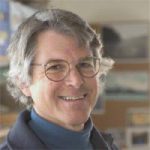 | Charles Hopkinson | University of Georgia & Marine Biological Laboratory | I have been studying estuaries since graduate school and in collaboration with colleagues from around the world, but especially here at Georgia and in Louisiana and Massachusetts (MBL). Estuaries are the most productive natural ecosystems of the world because they receive nutrient and water subsidies from every land use upstream and because of tidal pumping. It’s their location relative to land inputs however that also makes them vulnerable to N-enrichment and eutrophication. | Urbanization and estuary eutrophication |
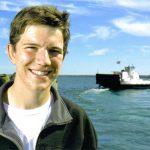 | Forrest Howk | Bayfield High School, OneEnergy Renewables | I grew up in Bayfield, Wisconsin. In high school, I partnered with various local organizations and my science teacher to complete an independent project looking at long-term boat traffic data as a proxy for changing ice seasons in the Bayfield Harbor of Lake Superior. After high school I went on to study conservation biology at the University of Wisconsin-Madison and received a Master’s degree in public policy from the University of Washington-Seattle. I am now an associate in project development at OneEnergy Renewables, a company that helps with solar projects around the United States. | The end of winter as we’ve known it? |
 | Jerry Husack | University of St. Thomas (Minnesota) | I grew up in southeast Texas, went to college in west Texas, and did his graduate work at Oklahoma State University. My work combines physiology, behavior, and life-history theory in an evolutionary framework to understand how form and function evolve. I am interested in how and why organisms allocate limited resources to different aspects of their form and function, as well as what trade-offs occur with those ‘decisions’. | Size matters - and so does how you carry it |
 | Alexandria Igwe | University of California-Davis | I am a microbial ecologist and study how microbial communities impact plant phenotypes. There were two reasons I became a biologist: interest and money. First, I enjoyed science. I grew up participating in science fairs and most of my topics dealt with nature: surveying insects, growing plants, growing crystals, etc. I was set to become a medical doctor when I was introduced to research as a career which led to my second reason I became a biologist: money. I was excited to pursue a career where I could, essentially, get paid to learn and explore topics of interest. Find out more about me by visiting my scientist profile! | Getting to the roots of serpentine soils |
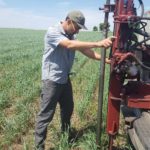 | Jake Jungers | University of Minnesota | The objective of my research group is to improve the profitability and sustainability of cropping systems. Our highly-collaborative team relies on the principles of plant ecology, field experiments, and statistical modeling to achieve these goals. Key components of our strategy include 1) improving the management of perennial crops in crop rotations, and 2) enhancing crop diversity at local, watershed, and regional scales. | Collaborative cropping: Can plants help each other grow? |
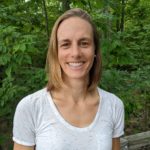 | Adrienne Keller | University of Minnesota | I am an ecologist and climate change scientist. I do research and work with land managers to use scientific knowledge when deciding how to manage ecosystems in a changing climate. I collect data in the field, do analyses in the lab, and conduct experiments in the greenhouse. I also synthesize data other researchers have collected to look for general patterns across studies. A lot of my research focuses on understanding what’s going on under our feet, exploring the many important roles of soils. I am passionate about making science accessible to people from all walks of life and applying good science to equitable land management policies. | Trees and the city |
 | Carly Kenkel | University of Texas at Austin & University of Southern California | Environmental variation is ubiquitous in natural systems. I am interested in understanding the mechanisms marine organisms use to cope with environmental variation at multiple scales, from changes in the relationship between intracellular symbionts and their host environment, to the mechanisms enabling local populations to persist in different habitats. I also have a strong interest in “translational ecology”: turning scientific findings into tools for conservation management. | Coral bleaching and climate change |
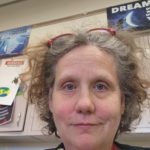 | Traci Kennedy | Milwaukee Public Schools | I am a science teacher who enjoys doing research during the summer. I participated in a research experience for teachers program for two summers at University of California-Santa Barbara looking at urchin responses to marine heatwaves. | Do urchins flip out in hot water? |
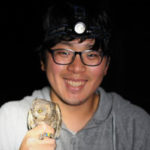 | Hankyu Kim | Oregon State University | I study how bird population response to climate change and land-cover change, focused on conservation of migratory and common bird species. I am interested in how dynamic changes in human use of land and climate change interact with bird population dynamics throughout their annual migratory life cycle. I have worked in various ecosystems, from temperate coniferous rainforests in the Pacific Northwest to temperate deciduous forests in South Korea and marine ecosystems in western Antarctica. I think leaving records of biodiversity is very important for biodiversity conservation and understanding its impact on human life. | Trees and bushes, home sweet home for warblers |
 | Lauren Kinsman-Costello | Kent State University & Michigan State University | I am an ecosystem ecologist interested in the effects of hydrology on aquatic nutrient biogeochemistry and ecosystem function. My research aims to inform larger questions about the resilience of ecosystems faced with environmental change and the ability of humans to manage, restore, and create ecosystems. A recurring theme in my research is the role that sediments play in freshwater ecosystem function (mud matters!). As a grad student I was part of the original team of scientists who helped develop Data Nuggets! | Marvelous mud |
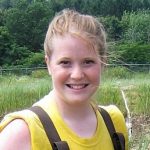 | Melissa Kjelvik | Michigan State University & Data Nuggets | I am a postdoctoral researcher and co-founder of Data Nuggets. I completed my PhD in Zoology and EEBB at the Kellogg Biological Station as a member of Gary Mittelbach’s Lab. For my research I work with juvenile bluegill sunfish. I am interested in how fitness tradeoffs may lead to the maintenance of individual-level biodiversity, particularly in the behaviors of fish. | Dangerously bold |
 | Gabe Knowles | Kellogg Biological Station LTER | I am an elementary teacher and Research Experience for Teachers (RET) fellow at the W.K. Kellogg Biological Station. I conducted research on monarch butterfly ecology and conservation with scientists from the Landis Lab at Michigan State University. I love bringing my experiences back to the classroom to share with my students. <"https://projectbiodiversify.org/2024/09/10/gabe-knowles/">Find out more about me by visiting my scientist profile! | Mowing for Monarchs, Part 1 & Mowing for Monarchs, Part 2 |
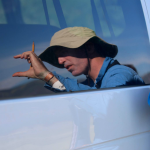 | John Kominoski | Florida International University, Miami | I opt to be outside. I am an ecosystem ecologist whose research integrates spatial and temporal scales of biogeochemical cycling and organic matter processing. My research focuses on the interface (ecotone) between ecosystems where community transitions and exchanges of materials occur. I use theory to test fundamental questions in ecology, enabling me to study diverse ecosystems ranging from the mountains to the sea. I am passionate about field-based research and teaching, and I maintain long-term research in the southern Appalachian Mountains, Gulf Coast of Texas, and the Florida Everglades. | The case of the collapsing soil |
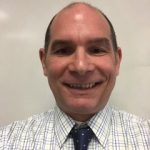 | Bob Kuhn | Centennial High School | I have been an educator for 22 years, mostly at Centennial High School in Roswell, Georgia where I have taught freshman biology and AP biology for 19 years. I am a proud graduate of the University of Georgia (BS/MS) with degrees in paleontology. In addition to teaching biology, I mentor students in independent research. | Hold on for your life! Part 1 & Part 2 |
 | Matt Kustra | University of Virginia | I am a senior at the University of Virginia majoring in Biology and Computer Science. My research interests are in post-copulatory sexual selection as well as how social environment affects animal physiology and behavior. I am currently working on my distinguished major’s thesis in the Cox lab, looking at how spatial distributions of lizards change throughout the year. After graduation, I plan on pursuing a PhD in evolutionary biology. | Is it better to be bigger? |
 | Alycia Lackey | Michigan State University & Murray State University | My research lies at the intersection of evolution, ecology, and behavior. I am interested in how populations evolve in response to the environment, especially in cases of environmental change. I study what generates, maintains, and erodes diversity within and between populations. For my PhD I explored the evolution of reproductive isolation between species of stickleback fish. I studied how divergent sexual and natural selection maintained distinct species and how environmental change facilitated hybridization between one species pair. I am enthusiastic about teaching, mentoring, and outreach. | Which guy should she choose? & Fish fights |
 | Doug A. Landis | Michigan State University | I am an entomologist and have been a professor at MSU since 1988. My research focuses on how agricultural landscapes influence plant-insect interactions. Together with my students, I study insect ecology and management, particularly in regard to biological control of insects and weeds. I hope to use these insights to help design sustainable landscapes that promote the benefits we get from insects, such as pollination and pest suppression for crops. I am also interested in invasive species ecology and management, and more recently in the conservation and restoration of rare species and communities. | Mowing for monarchs, Part 1 & Mowing for monarchs, Part 2 |
 | Ashley Lang | Indiana University | I am interested in the ways that microbial communities influence the response of ecosystem carbon dynamics to climate change and shifts in plant species composition. My previous work has been focused on New England forest ecosystems. When I'm not in the lab, you can find me hiking, making art, and hanging out with my family. | Going underground to investigate carbon locked in soils |
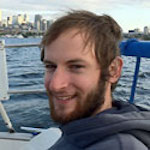 | Wesley Larson | University of Washington | My graduate research is focused on the use of genotyping by sequencing to acquire data from Chinook salmon populations in western Alaska; these data will provide conservation options and new insights into local adaptation. I am also interested processes influencing variation in the genes of the major histocompatibility complex. | Salmon in hot water |
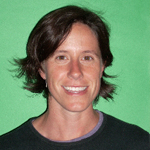 | Jen Lau | Michigan State University & Indiana University | I am an evolutionary ecologist interested in understanding the full range of ways that plant populations respond to changing environmental conditions. Much of my work focuses on how rapid environmental changes (e.g., biological invasions, rising CO2 concentrations, and global climate change) impact population dynamics, species interactions, and the evolution of plant populations. | Invasion meltdown & Springing forward |
 | Kevin Lee | University of Texas - Austin | My research uses sound to study the underwater environment, including ocean boundaries, aquatic life, and objects in the ocean. Many of my interests focus on the seabed: marine sediments, seagrass and aquatic vegetation, infauna (worms and other invertebrate animals that live in the seabed sediment), and carbon burial. I also study the acoustic effects of gas bubbles in the sediment and in the water, as well as how sound interacts and bounces off underwater objects (both natural and human-made). Another application of my research is finding ways to reduce human-made underwater noise pollution. | The sound of seagrass |
 | Laura Lilly | Scripps Institution of Oceanography, UC San Diego | My research focuses on zooplankton responses to El Niño events in the California Current. I completed a joint B.S. and M.S. degrees at Stanford University in Earth Systems, with an oceanography focus. In conjunction with those degrees, I researched tuna physiology. Prior to graduate school, I completed a California Sea Grant Fellowship with the West Coast Governors' Alliance and Ocean Observing Systems to connect oceanographic data to policymakers. In my non-research time, I love to surf, ride horses, run, travel to Baja California, write poetry, and promote low-waste lifestyles. | Crunchy or squishy? How El Niño events change zooplankton |
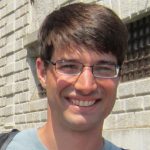 | Michael Martin | University of Maryland, Baltimore County & University of Arizona | I started my college career as an engineer, but after taking a zoology class I was hooked on biology. I was amazed by the millions of different types of animals that have lived, and currently live, on Earth. I needed to know how so many different types of animals evolved, and so I decided to study the process of speciation. I am currently working in a group of stream fish, called darters, to try and learn how differences in mating behavior might lead to new animal species. This work has led me to a more general interest in animal behavior that I now study in fruit flies as well. | Are you my species? |
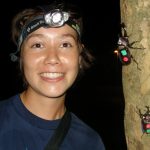 | Erin McCullough | University of Western Australia | I am fascinated by morphological diversity, and my research aims to understand the selective pressures that drive (and constrain) the evolution of animal form. Competition for mates is a particularly strong evolutionary force, and I study how sexual selection has contributed to the elaborate and diverse morphologies found throughout the animal kingdom. Using horned beetles as a model system, I am interested in how male-male competition has driven the evolution of diverse weapon morphologies, and how sexual selection has shaped the evolution of physical performance capabilities. | Beetle battles |
 | Remington Moll | Michigan State University | I am currently a graduate student. My research uses cutting-edge technologies such as GPS collars and camera-traps to study predator-prey interactions between large carnivores and their prey. I am excited about evaluating how ecological theory developed in "natural" areas like national parks applies to urban contexts. I grew up in the city and fell in love with nature and ecology in city parks. Although it comes with challenges, I believe that humans and large predators can peaceably coexist, even in and around cities. It is my goal to use the lessons learned from my research to help make that belief a reality. | City parks: wildlife islands in a sea of cement |
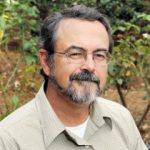 | James Morris | University of South Carolina | My research spans the basic and applied aspects of the physiological ecology of plants adapted to wetland habitats and the biogeochemistry and systems ecology of wetlands, primarily salt and freshwater intertidal wetlands. We take an approach that combines field work, analytical chemistry, and numerical modeling. | Is your salt marsh in the zone? |
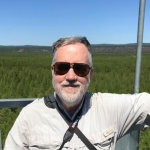 | Bill Munger | Harvard University | The Harvard Forest Environmental Measurement Station began measurements in the fall of 1989. The objectives at this site are to make long-term measurements of net carbon exchange, canopy-atmosphere exchange of selected trace gases, and regional atmospheric chemistry. My emphasis has been on the regional atmospheric chemistry and nitrogen deposition, and long-term trends in carbon storage. | Are forests helping in the fight against climate change? |
 | Alyssa Novak | Center for Coastal Studies, Boston University | I am a coastal ecologist who uses a combination of theoretical and empirical approaches to understand how coastal ecosystems experience and respond to stressors. The ultimate goal of my research is to provide information that facilitates initiatives to enhance ecosystem resilience. I have worked extensively in seagrass systems. Recently, I expanded my work to salt marsh systems and am investigating marsh-edge subsidence and its relationship to the invasive European green crab. | Green Crabs: Invaders in the Great Marsh |
 | Alison O’Donnell | University of Western Australia | I have a broad research interest in biogeography and landscape ecology in relation to climate variability and fire regimes. I am particularly interested in utilising dendrochronology (tree ring) techniques to understand past climates and fire regimes of arid and semi-arid regions in Western Australia. I also have an ongoing interest in improving understanding of the interactions between climate and fire and vegetation, topography and ecosystem processes. | What do trees know about rain? |
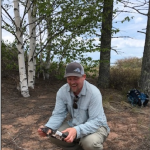 | Erik Olson | Northland College | I currently study a wide-variety of topics focused on predator ecology and conservation. Some of my recent projects include: wolf management and ecology in the Great Lakes region, island biogeography theory in the Apostle Islands wildlife community, grey fox climbing behavior, monitoring of jaguars and other wildlife in two National Parks of Costa Rica, factors influencing nest site selection and reproductive success in American kestrels, and the habitat value of old-growth white pine canopies. | Candid camera: Capturing the secret lives of carnivores |
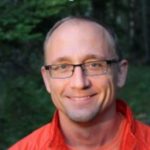 | John Orrock | University of Wisconsin-Madison | I am an ecologist who works at the intersection of behavioral ecology, global change, and ecological interactions. I study terrestrial plants and animals, often focusing on research to promote conservation and restoration, and often using behavior as a foundation. Current projects include linking climate, behavior, and physiology to understand large-scale variation in zoonotic disease, large-scale experiments to inform restoration of forest ecosystems, examining the effect of invasive shrubs on forest ecosystems, and exploring how plants utilize cues of herbivores to optimize defense. | A burning question |
 | Logan Pallin | Oregon State University & Palmer Station LTER | Populations of humpback whales in the Southern Hemisphere are recovering after intense commercial whaling during the last century. Along the Western Antarctic Peninsula (WAP) this recovery is occurring in an environment that is experiencing the fastest warming of any region on the planet. For my master’s research, I will employ a suite of genetic, biochemical, and photographic techniques to assess the demography of humpback whales along the WAP and how these demographics change with the onset of climate change. Specifically, I will measure changes in sex ratios and quantify pregnancy rates. | When whale I sea you again? |
 | Jessie K Pearl | University of Arizona | I am a postdoc with the U.S. Geological Survey in Seattle, WA studying the recurrence and impacts of large mega-thrust earthquakes along the Cascadian subduction zone. I use dendrochronology, dendroecology, geochronology, and sedimentology to describe and analyze past landscapes, extreme events, and climate. I am interested in regional climate dynamics, and how knowledge of the past can inform our understanding of current global change and future hazards. | A window into a tree’s world |
 | Neil Pederson | Harvard University | I am an ecologist at the Harvard Forest studying climate-forest dynamics and disturbance ecology. I was born and raised in Volney, NY. Throughout my career I have been a forester, professor, and research professor. My research focuses on the ecology of climate change of temperate, mesic forests including the eastern US, Spain, east Asia, and the Colchic Temperate Rainforest in Turkey and the Republic of Georgia. | A window into a tree’s world |
 | Damián A. Concepción Pérez | Wilder Middle School | I am a middle and high school Science and Math teacher. I have always been searching for innovative ways to get my students engaged in the science classroom and to connect their new knowledge with the real-world. In thinking of ways to help my students learn, I engaged my self with the scientific community collaborating in scientific projects and creating hands-on, interactive, and inspiring teaching lessons. It is my main interest to develop ideas that could positively contribute to any student’s STEM education. | What big teeth you have! Sexual selection in rhesus macaques |
 | Julia Perrone | Kent State University, Michigan State University | I grew up in Michigan and have a love for all things nature, which led me to pursue a BS in Environmental Biology/Zoology at MSU. After graduating, I worked as the lab manager for an entomology lab researching insects and landscape ecology. I am passionate about connecting people with science and nature. I got my Master of Library and Information Science at Kent State University. I specialized in youth engagement with the goal of building science literacy in my community through effective and engaging programming and collaborations with community organizations. Find out more about me by visiting my scientist profile! | Blinking out? |
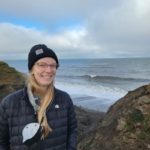 | Kaylie Plumb | University of Texas Marine Science Institute & Beaufort Lagoon Ecosystems LTER | I am a marine scientist specializing in biological oceanography with experience in the lab, on the open ocean, and in the estuary. My research interests include studying the interactions between the physiology of marine photosynthesizers and their environment, developing strategies to mitigate the effects of climate change on coastal ecosystems, and the intersections between science and policy. | Benthic buddies |
 | Richard Rachman | Boise State University | I am a Ph.D. student in Ecology, Evolution, and Behavior at Boise State University. I have a Master’s degree in Biology from California State University, Northridge, where I studied post-wildfire vegetation succession. I also have a lot of experience in plant ecology, invasive species management, and remote sensing research, and have led community science workshops and media outreach initiatives. My activism spans from queer representation in science, to expanding science to individuals not typically seen as scientists. My free time is spent playing with my puppy and writing poetry. | Too hot to help? Friendship in a changing climate |
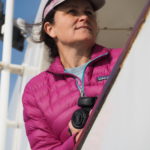 | Shannon Rankin | National Oceanic and Atmospheric Administration's Southwest Fisheries Science Center | I am a wildlife research biologist at NOAA Fisheries' Southwest Fisheries Science Center, where we use sound as a tool to study marine mammals. Sound travels exceptionally well in the ocean, and marine mammals have evolved to use sound for communication, foraging, navigation, and finding mates. Their reliance on sound as their primary means of interacting with the world means that we can learn a lot about these species just by listening! | Eavesdropping on the ocean |
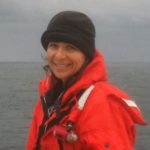 | Desray Reeb | U.S. Department of Interior’s Bureau of Ocean Energy Management | I am a Marine Biologist with BOEM. As a subject matter expert for the last decade at BOEM, I was tasked with assessing the impacts of offshore renewable energy on marine mammals and sea turtles. In my new position as the Science/Studies Coordinator for the Office of Renewable Energy Programs, I expand on these efforts by overseeing and supporting research directed at improving our ability to accurately assess the potential impacts of offshore renewable energy on the environment. I have been working with marine mammals for over 25 years, with a particular interest in right whales. | Eavesdropping on the ocean |
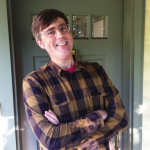 | Robert Reed | Cornell University | My research focuses on the question of where butterfly color patterns come from - how they originated and how they change over time. My work examines this question using multiple approaches, ranging from developmental genetics to behavioral ecology. I became interested in butterflies as an undergraduate at U.C. Berkeley. I later earned a PhD in Molecular and Cellular Biology at University of Arizona, where I characterized several genes involved in wing patterning and pigmentation. I am currently an Associate Professor at Cornell University where my lab works on many different types of butterflies, including Heliconius. | Why are butterfly wings colorful? |
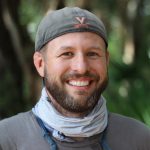 | Aaron Reedy | University of Virginia | I lead field research in Florida, where I'm conducting my PhD research on the quantitative genetics and genomics of intralocus sexual conflict in brown anoles. Before grad school, I taught biology at Thomas Kelly High School in Chicago, where I pioneered the new model of teacher-scientist collaboration and classroom experimentation that is the centerpiece of our Evolution Education program. | Is it better to be bigger? & Is it dangerous to be a showoff? |
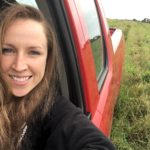 | Evelyn Reilly | University of Minnesota | I grew up in the city of Minneapolis and became interested in agriculture when I was in high school. I was surprised to learn that it has a huge impact on soil, water, and air quality, as well as wildlife habitat and biodiversity. I wanted to do something to help protect the environment, so I do research on nitrate under different crops. One project involved working with cities and organizations in rural Minnesota to plant Kernza above drinking water that had high levels of nitrate. I saw how farmers, city officials, water managers, and scientists were all working together to find solutions to the problem. | Nitrate: Good for plants, bad for drinking water |
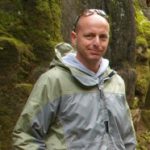 | Gal Ribak | Tel-Aviv University, Israel | My field of research covers comparative biomechanics and ecophysiology of locomotion in animals. I study the biomechanical, physiological and evolutionary mechanisms that shape the diversity of animal abilities to move (e.g. fly, swim jump) through their natural environment. | The flight of the stalk-eyed fly |
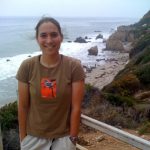 | Clare Rittschof | University of Kentucky | I am broadly interested in the evolutionary consequences and mechanistic underpinnings of behavioral plasticity, particularly in the context of social interactions. I have addressed this topic to-date with studies of alternative reproductive strategies and tactics in the spider Nephila clavipes, and more recently in the context of socially-induced variation in aggression in the honey bee. My research combines perspectives from behavioral ecology, behavioral genomics, and neuroscience. | To bee or not to bee aggressive |
 | Nick Robertson | Northland College | My research group focuses on using synthetic chemistry to reduce the environmental impact of society. We work to develop new biorenewable and/or biodegradable materials as well as developing methods for reducing the quantity of waste materials heading to landfills. All of the lab work for these projects is performed by Northland students. I have two young daughters who keep me on my toes and constantly entertained. When I am not spending time with my family, I love silent sports—cross country skiing, biking (road, mountain, cyclocross and snowbiking) and paddling. | Working to reduce the plastics problem |
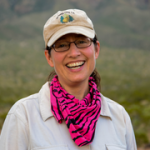 | Ashlee Rowe | University of Oklahoma | I am interested in sensory and motor systems and their role in the evolution of adaptive behavior, particularly traits that mediate interactions between animals. My ultimate goal is to understand how animals adapt to their environment. My research program is integrative and focuses on understanding the biochemical, molecular, genetic and physiological bases of adaptive behavior. To address these questions, I study traits that are at the interface of species interactions. | A tail of two scorpions |
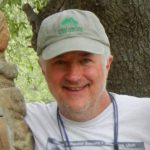 | Matt Rowe | University of Oklahoma | My research in behavioral ecology uses integrative approaches to study coevolution between predators and prey. These dynamic interactions show remarkable sophistication, from ground squirrels using rattling they provoke in rattlesnakes to assess the body size and temperature of their reptilian enemies, to grasshopper mice capable of feeding on highly neurotoxic scorpions because of subtle modifications in the mouse’s peripheral nerves. My conservation biology research examines habitat selection and habitat requirements in vertebrates. | A tail of two scorpions |
 | Kale Rougeau | Louisiana State University | I have always been interested in science and nature, leading me to study Animal Science and Wildlife Ecology at Louisiana State University for my undergraduate degrees. As a graduate student, I now study disease ecology in fall armyworms with a particular interest in how climate change and cannibalism can affect disease transmission. My main hobby is participating in dog sports with my Dalmatians (Jake and June), which include tricks, obedience, agility, scentwork, and much more. Find out more about me by visiting my scientist profile! | Does the heat turn caterpillars into cannibals? |
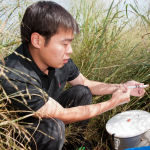 | Leilei Ruan | Michigan State University & University of California, Berkeley | I study the effects of nitrogen fertilizers on greenhouse gas emissions, a project that will help to maximize crop productivity while reducing emissions. In another research project, I examine biofuel crops. Most people think that if we use biofuel crops, what we burn doesn’t increase or decrease carbon in the atmosphere, and my research studies that question. | Fertilizing biofuels may cause release of greenhouse gasses |
 | Gregg Sanford | GLBRC, University of Wisconsin-Madison | I am responsible for the management of a 40 acre intensive biofuel cropping systems trial located at the UW agricultural research station in Arlington, WI. I was involved in the design and implementation of 3 new bioenergy cropping systems trials in WI. I conduct independent research related to the sustainable production of dedicated bioenergy crops with an emphasis on soil quality metrics such as carbon pools and dynamics. | Growing energy: comparing biofuel crop biomass |
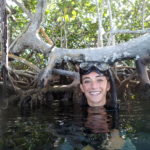 | Karina Scavo Lord | Boston University | I am a marine ecology PhD candidate interested in the population demographics and genomics of reef corals living in marginal, non-reef environments, such as mangroves and seagrass meadows. As coral reefs decline worldwide, scientists are looking beyond the reef to coral communities growing in these non-reef environments, which may serve as climate refugia or as reservoirs of resilient or hardy coral individuals. To better understand if these habitats are important to reef recovery, I use empirical, theoretical, and molecular approaches. | Corals in a strange place |
 | Doug Schemske | Michigan State University | The goal of my research is to characterize the mechanisms of adaptation. This requires information on both the ecological significance of putative adaptive traits as well as an understanding of their genetic basis. Such comprehensive studies are extremely difficult to accomplish; thus it is perhaps not surprising that our current knowledge of adaptation is inadequate. A central theme of my work is the link between temporal and spatial variation in ecological conditions and the adaptive differentiation of populations and species. I rely on ecological and genetic approaches to investigate the origin and maintenance of biological diversity. | Winter is coming! Can you handle the freeze? |
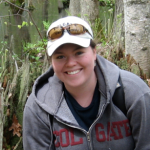 | Elizabeth Schultheis | Michigan State University, KBS LTER, & Data Nuggets | I am the Education & Outreach Coordinator for the KBS LTER and co-founder of Data Nuggets. For my PhD I studied invasive plants in Michigan and whether release from enemies, like herbivores and disease, could drive their success over native plants. My work on Data Nuggets includes science education research, curriculum development, and running workshops for teachers and scientists. My current research explores the effects of Data Nuggets on the students who use them, and the scientists who create them. | Do insects prefer local or foreign foods? & Do invasive species escape their enemies? & Springing forward |
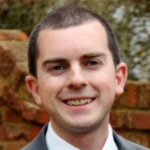 | James Screen | University of Exeter | My research examines climate varaibility and change in the polar regions, and the effects these changes on the global climate system. My research utilises a combination of observational analyses and numerical modeling to elucidate the physical drivers of climate variability on seasonal and longer timescales, and the two-way interactions between polar and lower-latitude regions. Currently, my research focusses on exploring how the inexorable retreat of Arctic sea ice effects extreme weather in Europe and the U.S. | The Arctic is Melting – So What? |
 | Jim Seeb | University of Washington | My research focuses on identifying genetic differences that distinguish one Pacific salmon population from another. My current work uses genetic markers to track the migration of adult salmon in the North Pacific Ocean and Bering Sea. My wife, Lisa Seeb, and I run the program which provides an important intersection between the Alaska Salmon Program and the SAFS Molecular Ecology Research Laboratory to conduct both basic and applied research. We want to better understand the genetic mechanisms underlying how salmon respond to environmental change. | Salmon in hot water |
 | Shelby Servais | Florida International University, Miami | My research focuses on how soil microbes are affected by environmental stresses and subsidies. I work in the Everglades where carbon-rich soils are threatened by climate change and land management practices. Microbial communities influence biochemical cycles, and microbial function is controlled by environmental conditions. I am testing how soil microbial function is affected by changes in salinity, inundation, and phosphorus. I am also passionate about science communication and outreach. | The case of the collapsing soil |
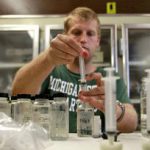 | Iurii Shcherbak | Michigan State University | I am a crop modeling scientist, experienced in programming and statistics. I have a strong interest in developing improved crop models with emphasis on limiting complexity while representing features sufficient for model to be widely applicable. I also want to understand ways to enhance efficiency of farm management and achieve sustainable crop production. | The ground has gas! |
 | Arial Shogren | Michigan State University & The University of Alabama | I am a stream ecologist - and I like to say that I literally fell in love with river research. As part of a high school outdoor education course, I fell into the St. Croix River in Northern Wisconsin! While I briefly floated downstream, I realized that I wanted to know more about how rivers work, sparking my early interest in aquatic ecology and hydrology. My research focuses on how rivers move and transform material as they cross the landscape. I work primarily in the Arctic. I am interested in how physical and biological variables interact to drive the signals we see in river water. Find out more about me by visiting my scientist profile! | Streams as sensors & Limit by limit |
 | Natalia Soares Quinete | Florida International University | I’m an analytical chemist with expertise in the environmental chemistry area, and my research focuses on assessing and understanding the sources, distribution, and fate of persistent emerging contaminants, particularly per-and polyfluoroalkyl substances (PFAS), in the different environmental and biological compartments and their potential impacts to humans and animals. I’m currently an Assistant Professor in the Department of Chemistry and Institute of Environment at FIU where I’m leading the Emerging Contaminants of Concern (ECC) research lab. | PFAS: Our forever problem |
 | Hannah Stoll | University of Minnesota | I am a plant breeder dedicated to applying my expertise in plant biology and genetics to enhance the sustainability of our agricultural systems. I am passionate about educating learners from all backgrounds and firmly believe that meaningful change requires collaboration across scientific disciplines. In addition to my research focused on improving crop traits such as yield and end-use quality, I actively collaborate with agronomists, soil scientists, social scientists, and more to understand the broader context of our work and to collectively implement sustainable cropping systems on our landscape. | A plant breeder's quest to improve perennial grain |
 | Paula Stoller | Valparaiso University | I am a hardworking and dedicated person who is personable and enjoys interacting with others. I am also a public speaker. My biggest academic goal is to graduate from Valparaiso University with a Bachelors of Science degree in Biology and Environmental Science. I would like to go onto graduate school and pursue a Master's in Entomology. I am very passionate about the environment as well. | CSI: Crime Solving Insects |
 | Nora Straquadine | Michigan State University | I am currently an undergraduate getting my B.S. in Zoology with a concentration in Zoo and Aquarium as well as a minor in Marine Ecosystem Management. Although aquatic life is my main interest, I think it’s important to appreciate other animal groups and take a break to play and explore the nature around you. That curiosity was how I was able to volunteer in labs on campus from entomology to genetics, and how I came to spend a summer at the Kellogg Biological Station in Michigan. | Which would a woodlouse prefer? |
 | Lantao Sun | University of Colorado at Boulder & National Center for Atmospheric Research | I am currently a research scientist at Cooperative Institute for Research in Environmental Sciences (CIRES), University of Colorado at Boulder and NOAA Earth System Research Laboratory (ESRL). | The arctic is melting – so what? |
 | Tomomi Suwa | Michigan State University & Chicago Field Museum | I am broadly interested in population, community, and evolutionary ecology in agricultural and natural systems. I work on topics including plant-insect interactions, biological invasions, and plant-microbe symbiosis. I completed my PhD in Plant Biology and EEBB at the Kellogg Biological Station as a member of Jen Lau’s Lab. My dissertation research examined the role of resource mutualisms in plant adaptation to abiotic environments. Find out more about me by visiting my scientist profile! | Does a partner in crime make it easier to invade? |
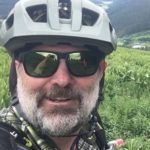 | John Swallow | University of Colorado, Denver | My research focuses on how morphology, physiology, and behavior evolve together as an integrated phenotype. I use stalk-eyed flies as a model system to investigate how evolution, driven by sexual selection (e.g. ornamentation that serves as secondary sexual signals), conflicts with locomotor performance and, ultimately, fitness. Sexual selection provides a selective engine with the ability to drive large changes in suites of behavioral, physiological and morphological characters with the potential for rapid speciation. Research in my lab includes ecological, organismal, biomechanical and behavioral approaches. | How to escape a predator, The flight of the stalk-eyed fly, How do brain chemicals influence who wins a fight?, Ant wars! & more! |
 | Jeff Taylor | Konza Prairie LTER | I am a field biologist at the Konza Prairie LTER. My roles include monitoring plant community composition across the site and managing the bison herd. I am interested in how grazing shapes plant communities, as well as the ways that plant communities affect grazers. This fascinating interaction becomes even more interesting when combined with the effects of fire and climatic variability. My work provides unique insights into tallgrass prairie ecology, but not only that, it’s also fun! | Does more rain make healthy bison babies? |
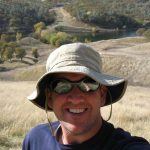 | Casey terHorst | California State University, Northridge | I am an evolutionary ecologist, studying how rapid evolution alters interactions between competitors, mutualists, and predator and prey. My lab is also interested in how evolution occurs in communities, where any species lives with many other types of species in a complicated web of interactions. When I'm not in the lab, I spend too much time consuming pop culture and playing pub-trivia with friends. | Testing the tolerance of invasive plants & Too hot to help? Friendship in a changing climate |
 | Robin Tinghitella | University of Denver | Work in our lab centers on the roles of ecology and behavior in rapid evolutionary change. We work with real organisms in their real habitats, and also use laboratory experimentation and genomic tools to understand the forces that shape diversity in animal communication and their consequences for divergence and speciation. Recently, we’ve been thinking a lot about the consequences of anthropogenic change for sexual selection. Find out more about me by visiting my scientist profile! | How the cricket lost its song Part 1 & Part 2 & Purring crickets: The evolution of a new cricket song |
 | Biz Turnell | Cornell University & Technische Universität Dresden | I study how sexual selection drives evolution, and the interplay between pre- and postcopulatory sexual selection. For my PhD I studied a Hawaiian cricket, measuring the different stages of sexual selection in the field and developing a mathematical model of strategic sperm allocation. As a postdoc I investigated how sperm metabolism changes in female sperm storage organs, and whether these changes can explain the differences in sperm use patterns we see in different species of Drosophila fruit flies. Currently I’m working as a scientific editor. Find out more about me by visiting my scientist profile! | Bon Appétit! & Stop that oxidation! |
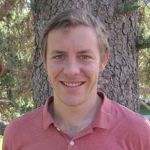 | Tony Vorster | Colorado State University | I am a PhD candidate in the Graduate Degree Program in Ecology. My research addresses natural resource management questions related to managing beetle-killed forests, forest carbon and invasive species. I have taught at both the elementary and undergraduate level and continue to enjoy taking science to K-12 classrooms. | Tree-killing beetles |
 | Bonnie Waring | Imperial College London | Bonnie is a climate change researcher. Her current research focuses on how the ecology of plant and soil microbial communities influences the carbon cycle and its feedback on climate change. Bonnie Waring received her PhD in Ecology, Evolution and Behavior from the University of Texas at Austin in 2013. Her research currently focuses on land-based negative emissions technologies. | Sink or source? How grazing geese impact the carbon cycle & Poop, poop, goose! |
 | Marjorie Weber | Michigan State University | I am an evolutionary ecologist, interested in how ecological interactions impact phenotypic evolution and diversification across evolutionary scales. My research focuses on interactions between plants and arthropods, and evaluates hypotheses that link plant-arthropod interactions with macroevolutionary patterns. I work in many systems, including ant-plant and ant-mite mutualisms, plant defense, and plant-pollination interactions. I also have a passion for promoting social justice and equity in STEM, and work to understand and implement change through education. Find out more about me by visiting my scientist profile! | Buried seeds, buried treasure |
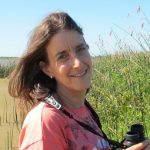 | Martha Weiss | Georgetown University | My research focuses on the role of behavior, by both plants and insects, in mediating interactions among the two groups of organisms. The sensory and behavioral attributes of insects, including vision, taste, smell, and touch, as well as a capacity to learn and remember, ultimately shape the insects' ability to interact with and exert selection on plants and on other insects. Similarly, the active behavior of plants allows them to take advantage of insects' sensory and behavioral capabilities. | Shooting the poop |
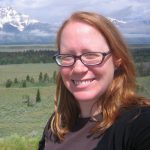 | Danielle Whittaker | Michigan State University, BEACON | My current work focuses on avian chemical communication, addressing the following questions: what information is present in a bird's odor, what can birds detect, and what are their preferences when it comes to choosing a mate? | Sexy smells |
 | Caroline Williams | University of California, Berkeley | An organism’s task is to get nutrients from the environment, and divide those nutrients among competing demands in the way that best enhances the passing on of its genes. This task is complicated by the fact that environments vary in concentrations of nutrients, and in abiotic factors that impact the acquisition and processing of those nutrients. My research combines field-based natural history and experiments with laboratory-based biochemistry and physiology. Research in my lab focuses on linking detailed biochemical and physiological measurements to life history and fitness consequences. | Beetle, it’s cold outside! |
 | Amy Worthington | Creighton University & Washington State University | I strive to help my students attain a broader scientific literacy that will serve them long after their formal education is complete. Specifically, I want my students to learn how science works, why it is an ever-changing field, what the scientific method is and how to use it, how to critically evaluate science in the news, and how to effectively communicate science to both peers and laypeople. I particularly enjoy engaging with the general public about science and I frequently seek out unique opportunities to interact with people of all ages. | How to escape a predator |
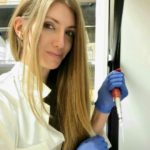 | Jazmine Yaeger | University of South Dakota | My interests surround the neurophysiology of stress-related responses and aggressive behaviors. While my early work focused on aggression in invertebrates, including mantis shrimp, I currently use rodent models to explore the development and progression of stress-induced affective disorders, like depression, anxiety, and post-traumatic stress disorder. Specifically, I consider how stress reshapes neural circuitry and if pharmacological intervention can reverse these changes. My research may help uncover novel treatments for mood and anxiety-related disorders. | Ant wars! |
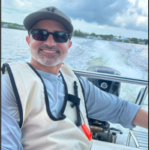 | Gary Yoham | Miami Senior High School | I am an AP Biology teacher. I hold a B.S. in Molecular Biology and a master's in science education from FIU. My passion for science and desire to share knowledge led me to pursue a career in education. To further enhance my understanding and teaching of real-world scientific issues, I joined the CE-BIORET program at FIU. As part of this program, I conducted research on PFAS contamination in Biscayne Bay. I am now committed to raising awareness about the environmental impact of PFAS, both locally and globally, by educating my students and encouraging them to become informed environmental stewards. | PFAS: Our forever problem |
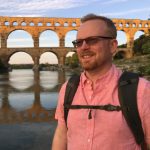 | Jay Zarnetske | Michigan State University | I am a hydrologist, which means I spend my days observing, quantifying, and advancing our understanding of how water interacts with human and ecological processes. In other words, I ask “How does the physics of water regulate ecosystems?” I have the opportunity to develop measurements, models, and methods that are relevant to a wide range of stakeholders dealing with climate change, sustainability, hydrology, biogeochemistry, aquatic ecology, and landscape ecology issues. This work has taken me from my roots in the Adirondack region of New York, to school, research, and jobs around the world. | Streams as sensors: Arctic watersheds as indicators of change |
 | Lydia H. Zeglin | Kansas State University | I worked and played outdoors a lot growing up, and always wondered about how all the pieces of nature fit together. Eventually in college I figured out that ecological research could be a job, and that the microorganisms were the most interesting and invisibly intriguing players that regulated nutrient cycling in every ecosystem. Now I lead a microbial ecology research laboratory, where my students and I learn about ecosystems together. We focus primarily on soil and stream-dwelling microbes and how they influence soil and water quality, and consequently the rest of the ecosystem. | Fertilizer and fire change microbes in prairie soil |
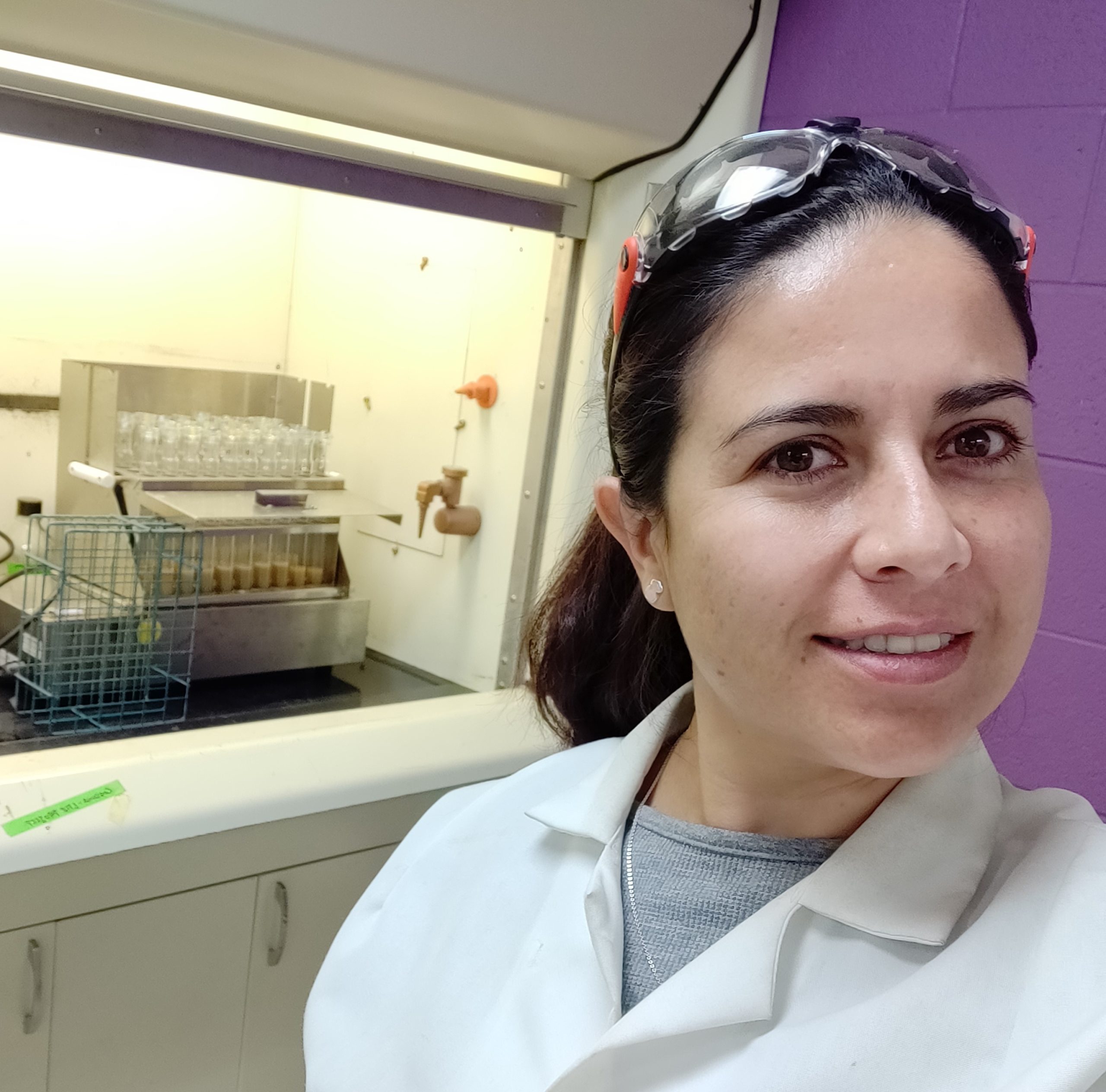 | S. Carolina Córdova | University of Nebraska-Lincoln | I am a soil scientist and trained agroecologist at the University of Nebraska-Lincoln. I research emphasizes carbon sequestration, nitrogen fixation, and long-term resilience in diverse cropping systems, contributing to advancing regenerative agriculture globally. | Fertilizer and fire change microbes in prairie soil |
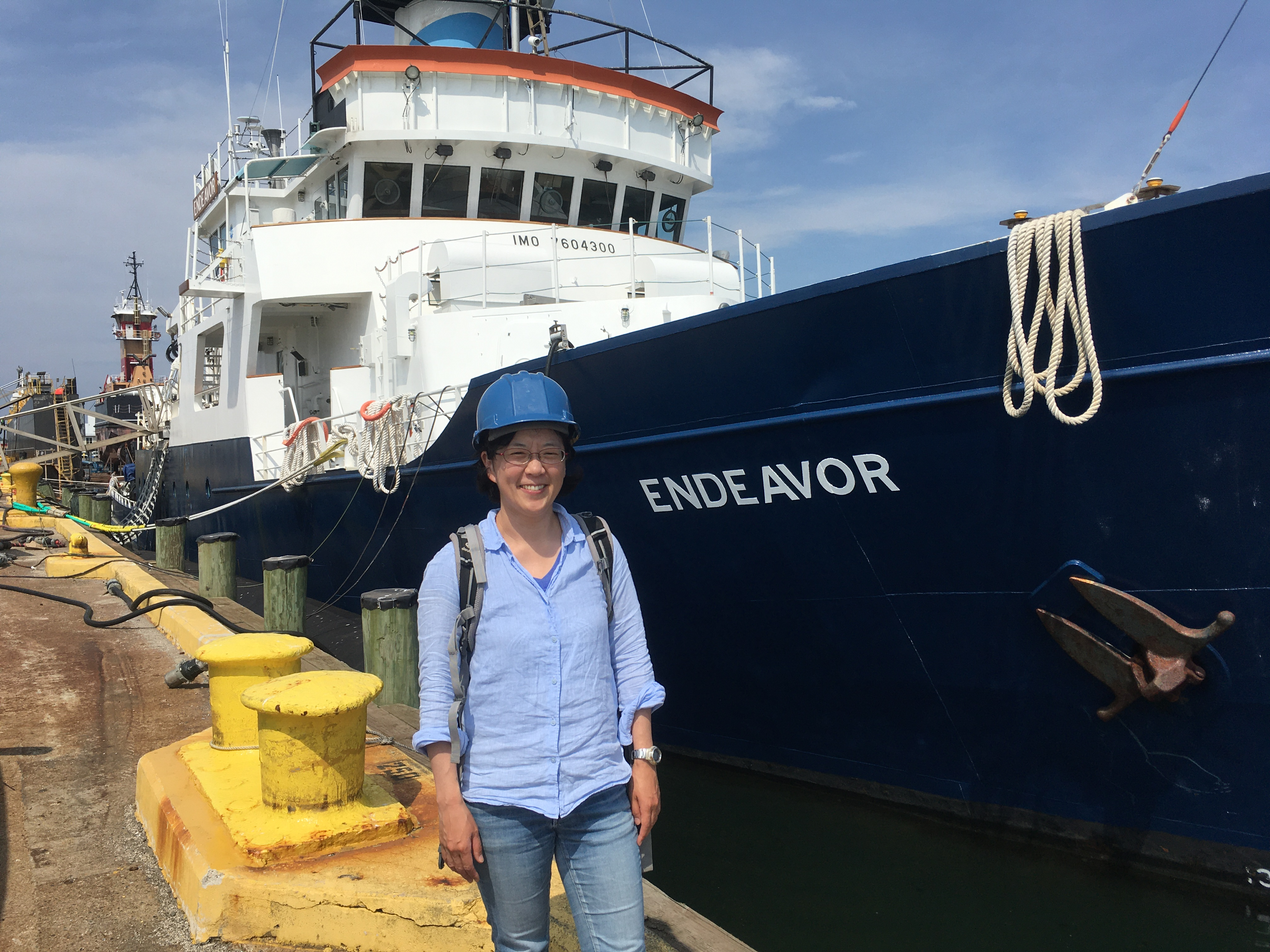 | Mei Sato | Woods Hole Oceanographic Institution and Northeast U.S. Shelf LTER | My research focuses on biological-physical interactions, addressing how environment influences animal behavior and distributions in coastal ecosystems and how those interactions affect trophic dynamics including zooplankton, fish, and marine mammals. In order to address problems across a range of temporal/spatial scales, I use active acoustics in different platforms (vessels, moorings, cabled observatories) combined with net sampling and physical measurements. | Catching fish with sound |
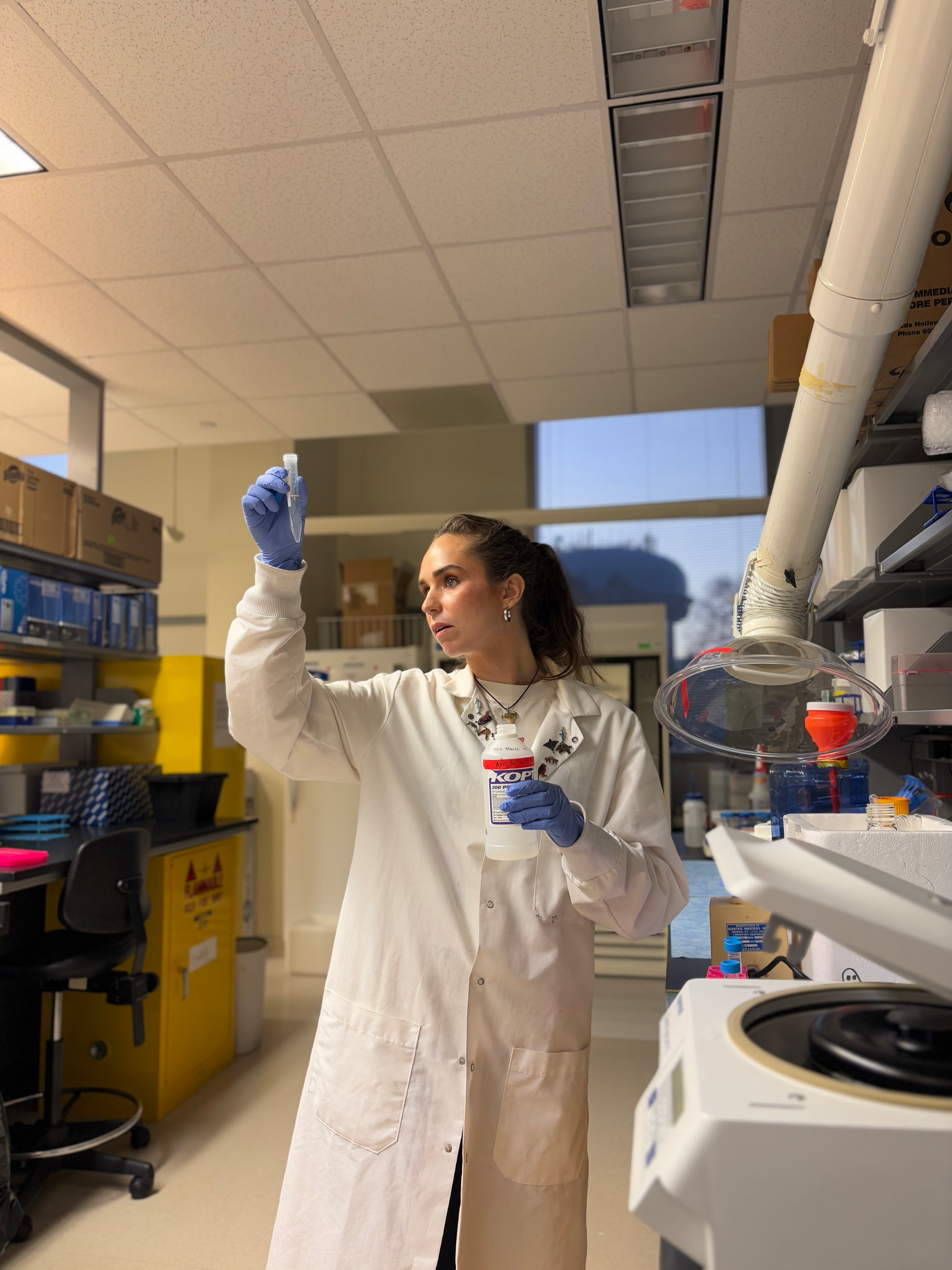 | Isabella Livingston | North Carolina State University | Isabella is from Portland, Oregon, which she credits for invoking her love of the natural world. She received her BS in Biology with an emphasis in Zoology from San Diego State University in 2020. Currently, she is a Genetics Ph.D. candidate focused on the use of genetic and genomic tools in wildlife health and conservation assessments. Since enrolling at NC State, Isabella has worked on projects with California sea lions, Galapagos sea lions, and American black bears. She hopes to work with as many species as possible. In her free time Isabella enjoys playing with her bearded dragon Hades, labradoodle Tucker, and Maine Coon Harvey. | Bear necessities |
